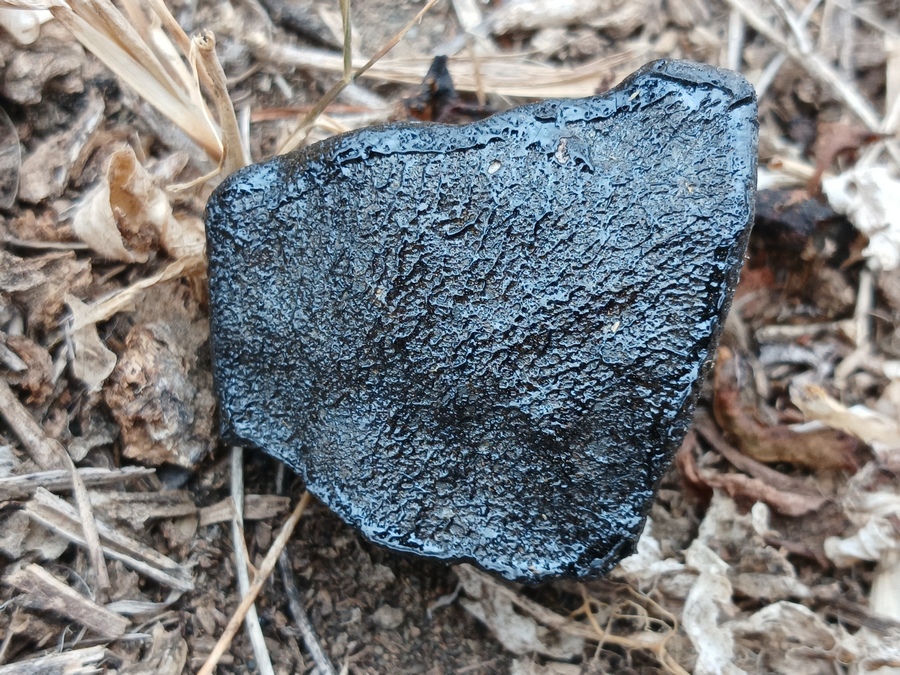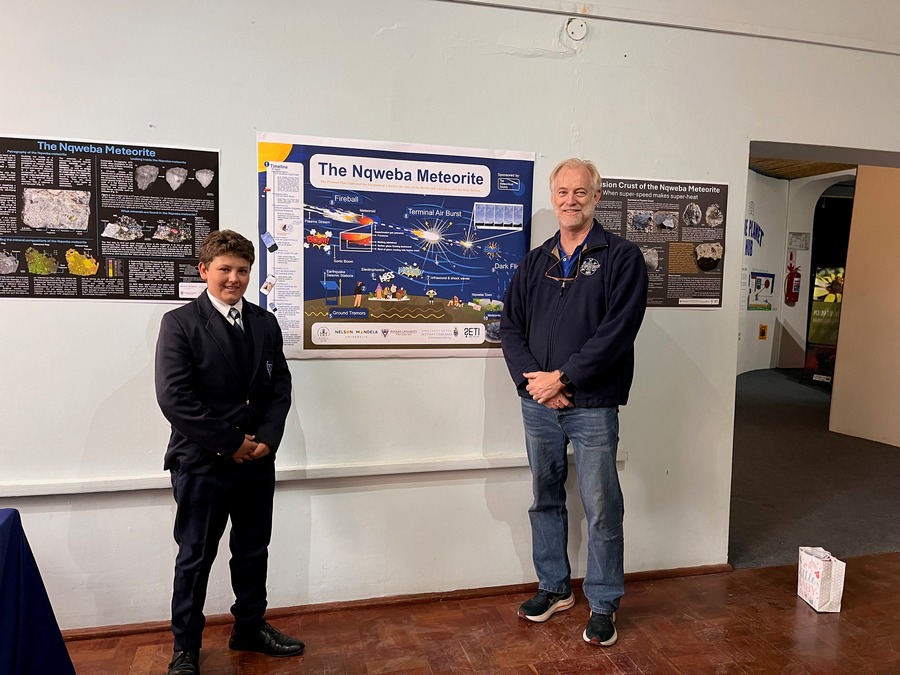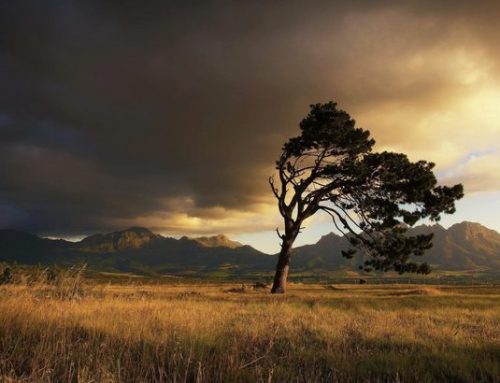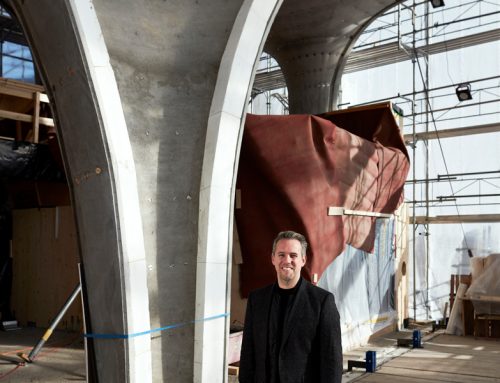On 25 August 2024, a two-ton rock burst into the Earth’s atmosphere from Space and a fragment of it was found by a nine-year-old girl in the Eastern Cape. A year later scientists are able to tell us more about the Nqweba Meteorite as it is called, and how they have tracked it all the way back to its origin in the Main Asteroid Belt located between Jupiter and Mars.
At a fascinating public lecture titled ‘Fire in the sky and rocks from Space’, hosted by Nelson Mandela University on 23 September, Professor Roger Gibson from Wits University’s School of Geosciences shared scientific insights and anecdotes about this finding, and highlighted the key role of citizen science observers in the investigation.
“The excitement, the sense of wonder that people felt when they saw ‘fire in the sky’ and quickly reported it in a flurry of calls, accounts and images, many on social media, was critical to scientists researching this event and the meteorite recovery,” said Gibson about the event on the 25th August last year, when the meteorite, which appeared as a brilliant fireball, lit up the skies across the Eastern Cape.

This 43 g meteorite with an exquisite black glass fusion crust was the first to be found by the search team more than a week after Eli-ze du Toit’s find. (Photo R.L. Gibson)
Nine year-old Eli-zé du Toit found the first fragment of the meteorite in the Nqweba (Kirkwood) district when she saw a small dark rock fall to the ground, out of a tree in her grandparents’ garden. It was presented to Dr Carla Dodd from Nelson Mandela University’s Department of Geosciences who acted fast and made contact with geoscience colleagues from Rhodes University and Wits University.
“Our response time was critical to pinpoint the sightings and hopefully find more fragments, which is incredibly difficult in a vast area,” Gibson explained. “Within 24 hours it was news around the world, which added to the pressure as it brings in meteorite hunters from all over the world. There is huge money in private meteorite collections.”
The Wits team immediately flew down to join the Nelson Mandela and Rhodes teams who began scouring the area between Nqweba and Cape St Francis where multiple sightings had been reported. “We slept four hours a night as we knew time was of the essence,” said Gibson who was present when the search team found another little piece glistening in the sand. “I was actually on the phone to a reporter when I found the next piece, and let out a rather unscientific yell of excitement mid-sentence to alert the search team” he recalled.

Dr Deon van Niekerk (left), Dr Leo Vonopartis and Dr Carla Dodd (right) inspecting the 6 fragments of the Nqweba meteorite found by Eli-ze du Toit. (Photo R.L. Gibson)
By day twelve, four fragments had been added to Eli-zé’s sample and by day 18 a further five were found. “We found a total mass of half a kilogram from what was initially a two-ton rock that came into the atmosphere travelling at 20km per second. Not much of it survived the fireball its path created, and we consider ourselves extremely lucky to have found what we have,” Gibson continued.
By comparison, in Botswana when a meteoroid hit in 2018, a first expedition found only one tiny 18-gram meteorite and it took another search 4 months later to find another 22 pieces with a total mass of 123 grams. Scientists in the Botswana find had to obtain the necessary permits before starting their search, only to find when they arrived in the search area that an unpermitted meteorite hunter had already visited the area. With the Nqweba meteorite, the Eastern Cape Provincial Heritage Resources Authority issued a permit within 2 days, allowing the search team to start organising almost immediately.
Gibson said the Nqweba meteorite find “offers the opportunity to look both across a vast distance of Space to another world and back in time to the conditions that formed our own world. We are on the first steps of our journey of discovery,”
He added, what makes the Nqweba meteorite find so special “is that this is a collective story, built around citizen scientists and multiple institutions across multiple countries. It is an ongoing journey of discovery, that includes a joint team of researchers from the Astronomical Society of Southern Africa (ASSA), the NASA’s SETI institute and specialist international research laboratories that we are approaching to build on the team’s initial work.” The NASA-Center for Near-Earth Object Studies recorded the event as it was happening.
Gibson explained over 150 written witness reports have been compiled of visual sightings from citizen observers, some from as far as Ceres and Bloemfontein, over 550km away. Cellphone, dashcam and security videos from across the Eastern Cape were tracked down, and one witness in the Gamtoos Valley even managed to record the sound.
“This helped us to validate the meteoroid’s path. Fortunately the fireball came in at a very low angle and was big enough for people to see it in broad daylight.”
The video analysis allowed the ASSA’s Tim Cooper to identify at least 18 break-up events in the fireball, which was visible for over 250 kilometres along the Eastern Cape coastal region between Mossel Bay and Nqweba. People even felt ground vibrations from the powerful shock wave as the meteoroid broke the sound barrier and Eli-zé’s grandfather described hearing thunder and the sounds of pieces of rock tumbling and whistling past the house with a screeching sound after the thunder had died away. Another observer said he instinctively “ducked” as he saw a bright light heading towards him, as he thought someone had shot a flare at him.

Learner Oliver Dixie with Prof. Roger Gibson at the Albany Museum, Makhanda. Oliver was one of seven witnesses who reported a rare electrophonic sound phenomenon simultaneous with the meteorite fireball (Photo R. Symons).
There are various types of meteorites and most are almost as old as the solar system, dating back 4.6 billion years. “We now know the Nqweba meteorite is a rare achondritic Howardite-Eucrite-Diogenite (HED) breccia (a rock made up of broken rock fragments). The source of HED meteorites is Vesta – the second largest body in the Main Asteroid Belt,” Gibson explained. “We know a lot about Vesta because NASA’s Dawn space probe studied it in exceptional detail in 2011-2012. That mission confirmed it is a protoplanet that, like Earth, was able to form a metal core. This was possible because of its size (525 km across), which was large enough to conserve heat long enough to completely melt.
This allowed metal and silicate melts to segregate, with the metal sinking inwards to form a nickel-iron core and the silicate melts crystallising around it to form a crust and mantle. In doing so, these melts behaved much like Earth’s mantle and crust still do today, forming different types of magmatic rocks that are largely indistinguishable from rocks on Earth, apart from their exceptional age and small chemical differences that fingerprint them as not coming from Earth.
Other studies of HED meteorites show that Vesta was essentially solid by about 4.56 billion years ago, only 40 million years after the formation of our solar system.
The scientists’ permit allows them to cut some of the fragments for analysis, mindful that this should be as non-invasive as possible.
“Many of the 10 main pieces found display an incredibly beautiful black glassy fusion crust that contains bubbles, wrinkles and flow lines that show how the airflow around each one dragged the melt backwards away from their front-facing sides that were being subjected to blowtorch-like heat in the fireball. Broken surfaces caused by the collision with the ground show a concrete-like mix of millimetre- to centimetre-sized green crystals and rock fragments in a powdery-looking grey matrix.
To analyse the meteorites the team used a CT scanner to build 3D pictures of several of the fragments, and optical and scanning electron microscopes to obtain mineralogical and textural information, and an electron microprobe to collect mineral chemical information from the thin section slices. These steps were necessary to complete a submission to the Nomenclature Committee of the international Meteoritical Society for Nqweba to be officially recognised as a meteorite belonging to the HED family. The Committee approved the application on 8th September, 2025, and the team is now able to submit results for publication in scientific journals.
“The multi-institution team of scientists is now piecing together the mineralogical, textural and geochemical evidence from the Nqweba fragments that will allow us to build up their ‘life story’ and, by extension, that of Vesta. Future isotopic analysis will be needed to better understand how this particular mixture of rock formed, but also what happened to it between when it was blasted off Vesta and its arrival on Earth.”
“One of our team members is Professor Lew Ashwal, who studied the first Apollo lunar samples. He remains as excited as those of us who were out hunting for pieces in the search teams – that thrill never seems to go away. And while we pursue the scientific analysis, we are still looking for more pieces to add to our knowledge about the solar system, and to publicly share what we learn as we progress.”




